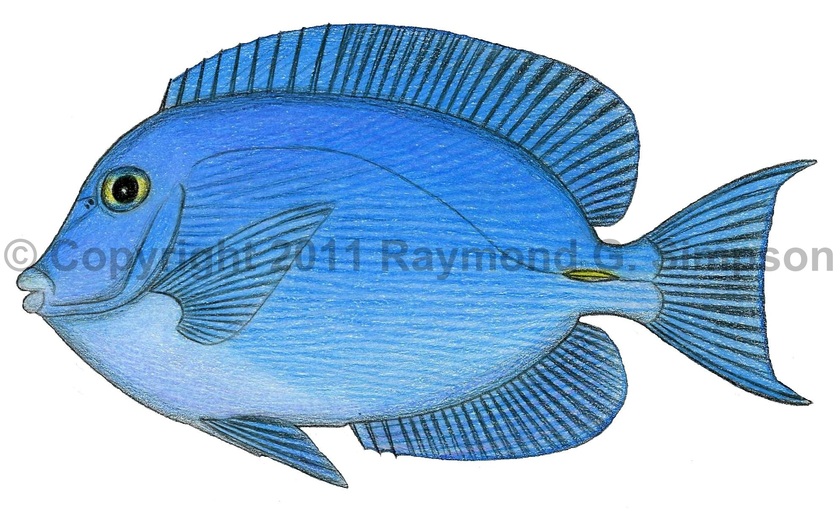
Common Name
Blue Tang
Year Described
Bloch & Schneider, 1801
Identification
Dorsal Fin: IX, 26-28
Anal Fin: III, 24-26
Pectoral Fin: 16-17
Pelvic Fin: I, 5
Gill Rakers: 13-14
Teeth: 18 in upper jaw, 20 in lower jaw
Body very deep (almost round) and compressed. Head profile steep with eye high on head. Mouth terminal and very small. A single blade-like spine on both sides of caudal peduncle. Scales ctenoid and small, covering body, parts of head, and fin bases. Caudal fin emarginate.
Color
Body bright blue to dark purplish-gray with numerous fine darker lines on side. Fins bright blue (often highly contrasting with dark body) with oblique darker lines. Fin margins pale blue. Caudal peduncle spine yellow to white. Juveniles bright yellow to yellow-orange with blue fin margins. Fish transitioning from juvenile to adult color pattern is not size dependent and yellow fish can be similar in size to blue fish. Transitional tang are blue with yellow tails.
Size
Common to 25cm. Maximum size to 36cm.
Habitat
Coral reefs and rocky areas. An herbivore that often forms large aggregations to feed, often mixed with other surgeonfish species.
Range
Florida to SE Brazil, including Bermuda and the Caribbean Sea. Rare in the Gulf of Mexico and north to New York.
References
Randall, J.E. 2002. Acanthuridae (pp 1801-1805). In: Carpenter. 2002. The living marine resources of the Western Central Atlantic. Vol. 3: Bony fishes part 2 (Opistognathidae to Molidae), sea turtles and sea mammals. FAO Species Identification Guides for Fisheries Purposes. American Society of Ichthyologists and Herpetologists Special Publication No. 5.